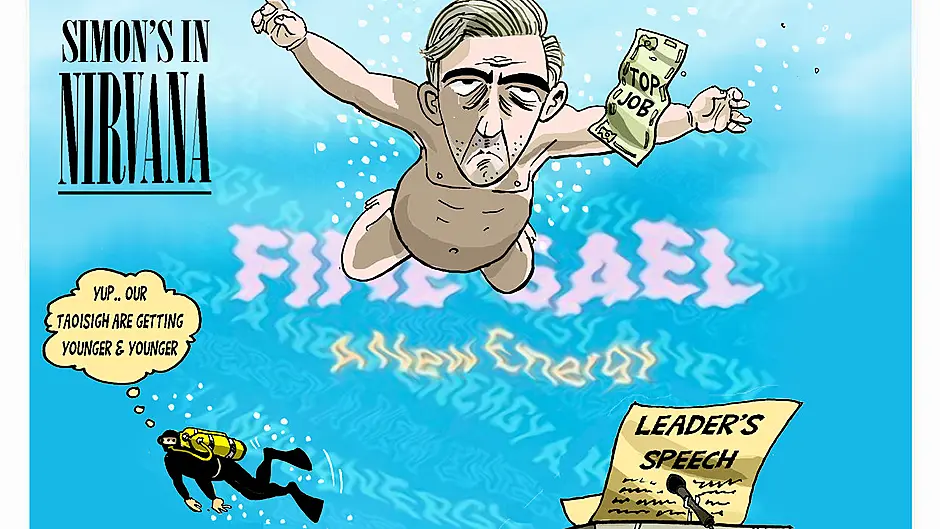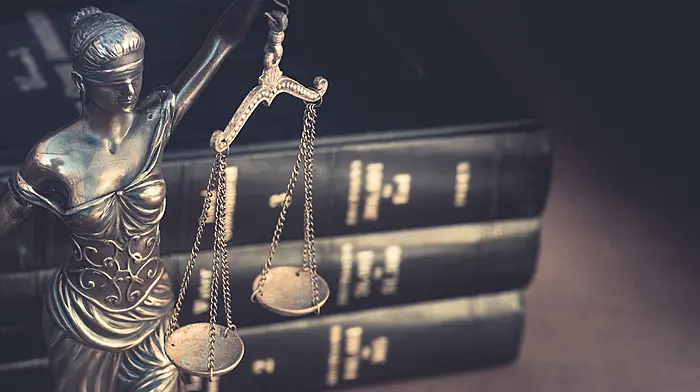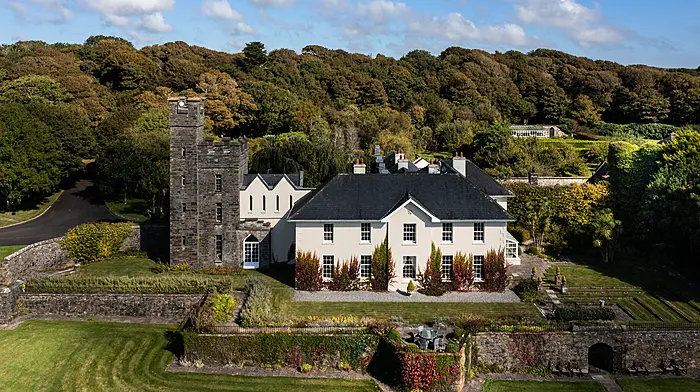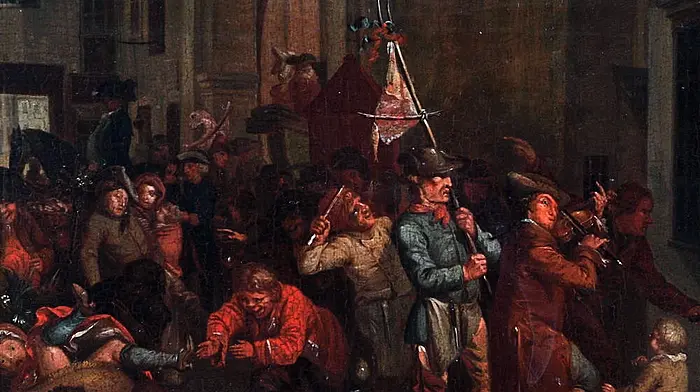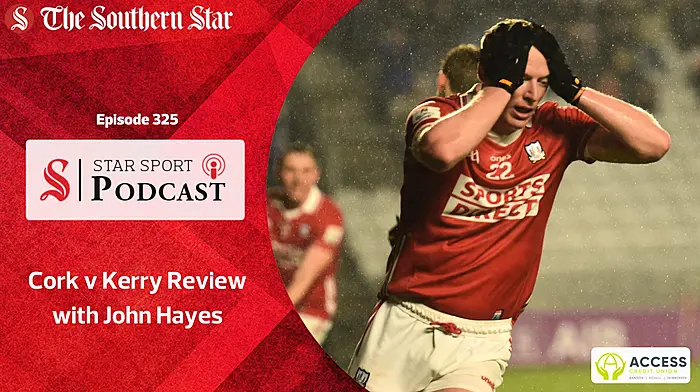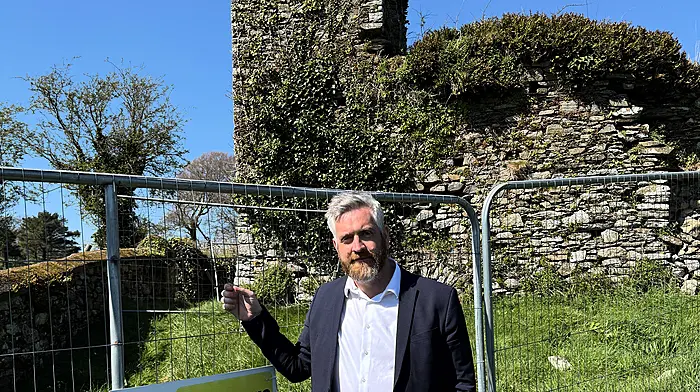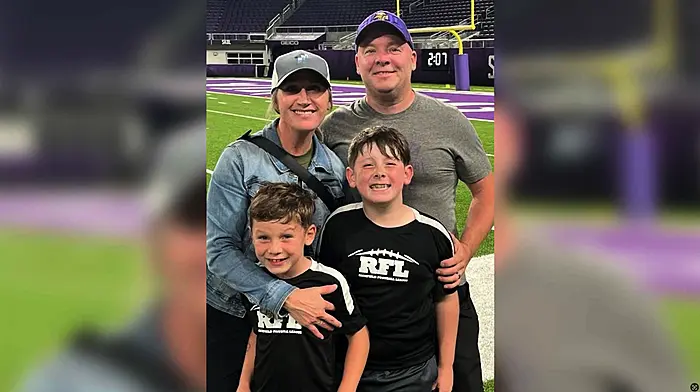
ALL eyes were trained upwards this week for a great cosmic moment, as day and night entwined in the skies overhead and a radiant orb, our blazing sphere of light yielded to the moon’s embrace.
I’m not speaking about the solar eclipse in North America but the Fine Gael Ård Fheis, an event of such spectacular celestial flair that surely they will speak of it for aeons to come.
The night sky was illuminated with the prospect of 250,000 homes and the public gazed on in awe as the dark moon of Simon eclipsed the fading star of Leo, all of us hoping and praying that we wouldn’t blinded by the terrible beauty and cosmic power of the entire event.
The early days of the Harris era have been pregnant with promises and somewhat desperate declarations of some great new dawn but you’d wonder if the plebs down on terra ferma have seen enough fireworks in the sky and want a bit of actual reality taking place on the ground?
My teen daze Kurt short
IT’S difficult to believe it’s been 30 years since Kurt Cobain passed. His tragic death was such a huge event in my 1990s West Cork teenage life and it had such a big impact on me and my group of friends, that it all seems strange and intense in retrospect.
We were grunge superfans at the time, all of us starting our own bands and supported by the great people in De Barras and Connolly’s of Leap, who actually gave us all a platform to express ourselves.
It was a very different pre-internet time, where the main engine of culture for us was MTV.
I had to rely on friends to tape shows for me on VHS that I could play back a week later, so I could get my fix of the latest unplugged gig – Nirvana, Alice In Chains or Neil Young – or the release of the latest music video, which was an artform of its own in that era.
I guess my ‘we used to swap tapes of Headbangers Ball’ is my grandparents’ generation’s equivalent of going to school in their bare feet.
Things have changed so fundamentally in music and culture but it still feels like we are existing in the comet dust of that time.
That generation in the USA was very much defined by widespread divorce and familial breakdown, resulting in a very sardonic combination of punk and 70s rock, which was a little bit doomed to failure once it became part of the mainstream.
This was always a fundamental torment for Cobain, amongst his other personal problems, and capitalism always finds a way to commodify these cultural moments for its own end.
Cobain knew this and, ultimately, couldn’t bear it. We had none of those problems in little old Ireland but adopted the culture of the 90s US slackers nonetheless.
Looking back now, we had so little to be angry about back then, but that doesn’t stop a teenager.
Now, you have the texture and mood of grunge in any available Starbucks and the whole era watered down to a million Spotify playlists.Music, these days, holds less cultural impact and is just another add-on in the social-media age, like a font or an Instagram filter.
Most of the music industry survives based on heritage acts doing tours to pay for their pensions.
I’m not saying there isn’t amazing music being made, or evidence of thriving scenes in Ireland and beyond, it’s just become a very, very hard way to make a living.
With AI coming down the tracks, which could potentially allow you to generate a passable version of Kurt Cobain’s voice singing All Kinds of Everything, it’s strange that we seem to be in a much worse-off place than back in 1994.
The Cobains of Cobh, wot?
It turns out that Carrickmore, a small village in rural Co Tyrone, has an unlikely connection with Cobain.
As reported by the BBC, Kurt’s Irish roots can be traced back to the Mcllroys, farmers in the 18th century.
The village has embraced its association with Cobain, and several businesses have sprung up to cater to the needs of fans who pilgrimage to explore his ancestral home. The Mcllroy family homestead, which still stands today, has been preserved as a museum.
The Carrickmore Heritage Centre also houses a collection of memorabilia related to the musician and of course, they have extended an open invite to the Cobain family to visit.
What has this got to do with us you might say? Well, Cobain has previously stated in an interview that he believed his people came from Cork, having done some research by contacting random people in the US phone book whose names resembled Cobain.
He said: ‘We played in Cork and the entire day I walked around in a daze. I’d never felt more spiritual in my life. It was the weirdest feeling and I have a friend who was with me who could testify to this I was almost in tears the whole day. Since that tour, which was about two years ago, I’ve had a sense that I was from Ireland.’
It’s time to spring to action here before the Tyrone crowd pushes us out of the picture completely! We’ve got recordings of Kurt saying this was his spiritual home, now we just need to find a family link. So this is a callout to local historians – get out the parish register – your county needs you!

